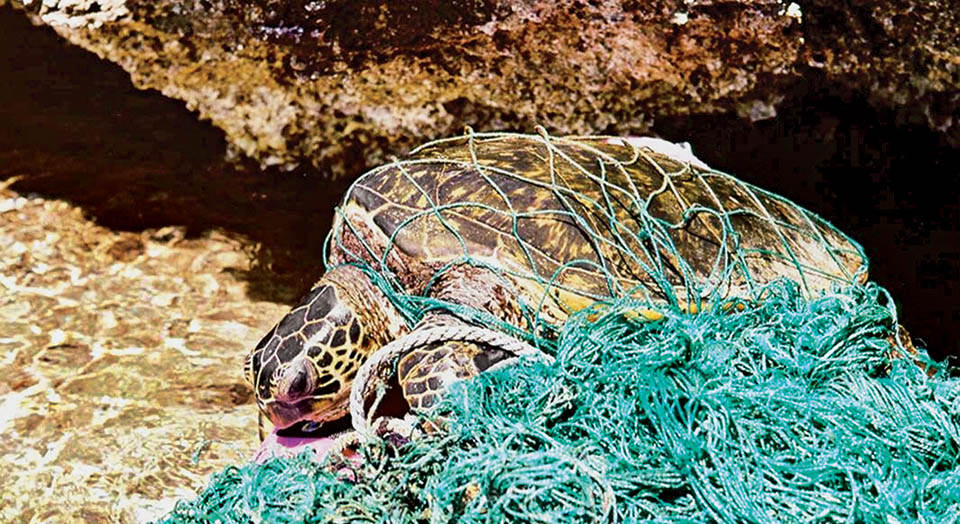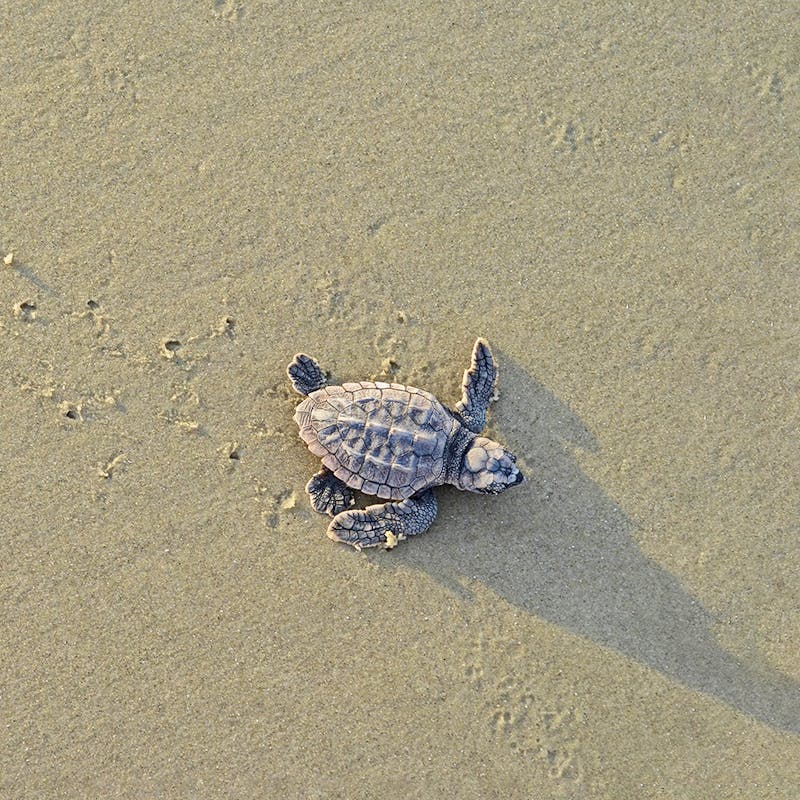Awash in Trash
Turning the tide on the problem of marine debris
 Some of the most fascinating animals at the National Zoo in Washington, D.C., this summer do not roar, climb, run, swim or jump. They’re not even alive—they’re sculptures, 17 colorful creatures, each standing 10 to 12 feet high. And they’re made entirely of marine debris, trash found on beaches and in the ocean.
Some of the most fascinating animals at the National Zoo in Washington, D.C., this summer do not roar, climb, run, swim or jump. They’re not even alive—they’re sculptures, 17 colorful creatures, each standing 10 to 12 feet high. And they’re made entirely of marine debris, trash found on beaches and in the ocean.
Twist-off caps and takeout containers form Lidia the fur seal. Old tires and shoe soles shape the wings of Sebastian James the puffin. The sculptures also contain fishing nets, plastic chairs, shotgun shells, toothbrushes and disposable lighters.
The exhibit, “Washed Ashore: Art to Save the Sea,” travels the country to raise awareness about the pervasive trash, mostly plastic, on beaches and in waterways worldwide. This garbage snares fish and whales, traps turtles and otherwise wreaks havoc on ocean life. Plaques beside each sculpture share information about marine debris and its impacts on species in the hope that consumers will think twice before they grab that single-use straw. Hundreds of volunteers on the West Coast collect trash from local beaches then assist the project’s lead artist, Angela Haseltine Pozzi, in shaping the animals.
Marine debris does not just come from beach litter. Even in landlocked cities, heavy rain washes trash from streets and sidewalks into storm drains, which frequently do not filter it out before they connect with local waterways. Improperly disposed trash blows into sewers or streams, and from there it’s only a matter of following the current.
From water bottles and shopping bags to toy trucks and coffee cups, scientists estimate some 315 billion pounds of plastic waste swirl around the world’s oceans, with more than 17 billion pounds added every year. Manufacturers only started substituting plastics for natural materials on a large scale a half-century ago, but today they are found in clothing, packaging and even toiletries and cosmetics. And the risks to wildlife run greater than individual entanglement or ingestion followed by starvation. The chemical compounds found in plastics do not exist in nature and never truly go away, changing the makeup of the oceans forever.
While it is impossible to know the full effects of introducing huge quantities of foreign material into our oceans, we do know that seabirds, turtles, fish and other marine wildlife eat and get caught in this waste, often with lethal consequences. Animals cannot digest plastic, and their stomachs fill with it, leaving no room for food and causing starvation. Plastics also soak up toxins like DDT and BPA—both known carcinogens—from the surrounding environment, which then move up the food chain, concentrating inside the bodies of animals that mistake small bits of plastic for food.
Marine debris has consequences for people, too, from contaminating the fish some people eat with toxins to decreasing the tourism value of our beaches. Plastic floating in the ocean can also aid the spread of invasive species like barnacles and mussels, which cling to floating trash as it travels from coastline to coastline.
Scientists and activists are working to solve this problem, but it is much more complicated than collecting trash. Even if we could trawl entire oceans to remove plastic, we would damage vital marine habitats like coral reefs in the process, and no net could possibly capture the massive amount of microplastics in the marine environment. Smaller than five millimeters and barely visible to the naked eye, microplastics are particularly pervasive and hard to remove from the water. They originate as microfiber and nylon clothing, microbeads in face wash and bigger items that break down under sun and waves.
The Washed Ashore project requires a large community to accomplish its mission, and the wider marine debris issue needs the participation of communities around the world. The only effective solution to marine debris is stopping it at the source: us. Preventing your waste from reaching the ocean is much easier than cleaning it up once it’s there.
–Julie Elfin
Only select articles from Defenders are available online. To receive 4 issues annually of the full award-winning magazine, become a member of Defenders of Wildlife!


